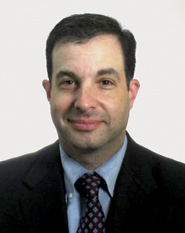Over the past two years, actively managed exchange traded funds have been gaining ground as an alternative to traditional mutual funds, though experts say their growth could be limited.
Actively managed ETFs have higher fees than passive ones, but they still have advantages over mutual funds in that they are transparent and offer intraday liquidity. Still, there are some strategies where a fund manager might prefer to use a mutual fund format to keep from revealing tactics.

“In some cases, where you have the hidden secret sauce, it’s better in a mutual fund,” said Greg Friedman, managing director of products for Russell’s ETF business. “I think the mutual fund and the ETF still stand as a complement to each other.”
There are currently more than 40 actively managed ETFs in the U.S., all of which are listed on the NYSE Arca exchange. The first one, a former Claymore fund now known as the Guggenheim Enhanced Core Bond ETF, listed on April 7, 2009.
Though there are still only a few actively managed ETFs, there is an ever increasing interest in the active space, according to Laura Morrison, head of U.S. exchange traded products for NYSE Euronext.
She pointed to the number of issuers that have filed with the Securities and Exchange Commission for exemptive relief, indicating their plans to either enter the active ETF business or add active funds to their current offerings.
Mutual fund managers Fidelity, T. Rowe Price and Eaton Vance, stalwarts of the mutual fund world, have all filed to get into actively managed ETFs, and Morrison said there is a large pipeline of companies that are in discussions with the SEC.
Reggie Browne, managing director of the ETF team at Knight Capital, said the jury is still out whether there will be a broad-based adoption of actively managed ETFs, but he added that there already are several such funds that have proven to be successful.
The retail space could be seeing a transition away from open-ended mutual funds and into ETFs, according to Briton Ryan, head of U.S. ETF sales and trading for Newedge. That will be especially true if 401(k) plans offer more ETF options in the future, he added.
Even if mutual fund assets decline, Ryan thinks actively managed ETFs won’t see nearly as much growth as passive ETFs, which have lower fees. That could be bad news for traders, since mutual funds generally trade more heavily than passive ETFs.



